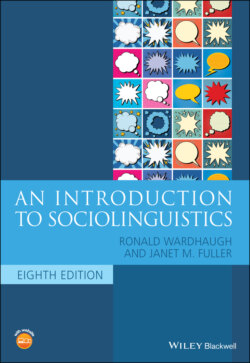Читать книгу An Introduction to Sociolinguistics - Ronald Wardhaugh, Janet M. Fuller - Страница 83
Matched/verbal guises
ОглавлениеThe matched guise technique was developed to elicit attitudes indirectly (Lambert et al. 1960); in this methodology, research participants hear the same person speaking in two different varieties and rate them on various personal traits, normally using a seven‐point scale. These traits typically include descriptors related to solidarity such as kindness and attractiveness as well as characteristics related to prestige, such as ambitiousness or intelligence. Participants are not informed that they are hearing the same person in two different recordings; the idea is that differences in ratings reflect research participants’ attitudes about the languages and the people who use them. A variant of this, the ‘verbal guise’ (Cooper 1975), uses different people for the different varieties.
A study on Paris French (Secova et al. 2018) used a mixture of direct and indirect methods to study attitudes among youths toward colloquial Parisian varieties. The research participants were themselves residents in the multiethnic, multicultural area of suburban Paris, and their evaluation of speech samples from this area showed not just affiliation and disaffiliation, but also a particular identity indexed by the linguistic features used in this variety: a streetwise, immigrant, or mixed‐heritage persona. The attitudes of these language users to the speech of their ingroup showed that they did not embrace the positive attitudes about ‘posh’ varieties, but valued their own variety and the social identities it indexed. We return to this topic in chapter 8 in our discussion of multilingualism.
